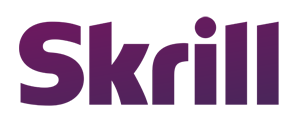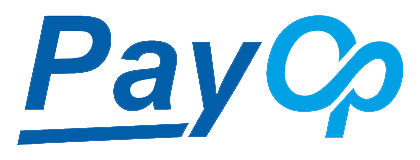Attention MAC Users: With a single button mouse, hold down the Command key on the keyboard while you click the mouse button to simulate a right click in the game.
Basic Options: Hit (ESC) to bring up the options menu, where you can adjust video and game settings, and re-map your key-binding. You can see all of the keys in the game within the key-binding section.
Movement: Use the W, A, S, D keys to move around the world. Or, hold down both mouse buttons to walk forward (moving the mouse at this point turns your character). The arrow keys will also move your character.
Click to Move (by default this option is off).
Players will need to turn it on to use this by going to Advanced Options, and then Interface Options and then checking the radio box next to Click to Move. Click to Move is an auto-interaction feature that will allow players to do several things by using their mouse. With Click to Move turned on, a player can do the following:
Right click on the ground to move to that location.
Right click on a creature to automatically move to that creature and initiate combat.
Auto-run is a very useful and important key to learn. This allows you to continue running without holding a key or the mouse down. You can assign a key to auto-run by hitting escape, then selecting key bindings on the menu. Scroll down until you find "toggle auto run." The default key is Num Lock.
Camera: Hold down the left mouse button to look around the world. Hold down the right mouse button to turn your character using the mouse. You can zoom the camera in and out using the mouse wheel or using the Home and End keys.
Interacting: Left-click selects objects and NPCs in the game, while Right-click activates an object or talks to an NPC. The mouse cursor is context-sensitive; if you move your mouse over an object that you can interact with, an icon will appear on your mouse cursor indicating the type of action that will occur if you Right-click (sword = attack, cog = manipulate, speech balloon = talk, etc.)
Attacking: To attack a creature, move within range (move to where you can see the attack cursor when you mouse over the creature - a grayed out cursor means you are out of range) and right-click on the creature. You will enter attack mode. Move your character next to the creature and you will automatically begin to attack. In addition to right-clicking on a creature, you may also select the "attack" icon from the Action Bar.
Action Bar: The action bar at the bottom of the screen contains your spells, special abilities, or frequently used items like Food and Water (which give back health and mana respectively). You can activate these by either left-clicking on them, or by typing the number corresponding to the slot of the spell or ability you wish to use. Mousing over the icons will also show you a tooltip containing the name of the spell or ability. You can also consult your spell or ability books (Spellbook & Ability button on the Action Bar) to get a full description of each ability or spell your character may have. You can re-arrange your Action Bar by clicking and dragging on the icons. You can also add new spells/abilities to this bar as you receive them by dragging them from your Spell or Ability book. You can also place items in the bar for easy activation. Items on the action bar now remain there even after they are consumed.
Items that are in your action bar and are equipped display a green border around them so it's easy to tell which of your action bar items are equipped and therefore usable.
Consumable items on the action bar will now always show the number remaining, even if there are none in your inventory.
Multiple Action Bars: You can have multiple action bars onscreen at the same time. You can activate the additional action bars through the Interface options menu. Additional action bars have range indicators on them. If a button in one of a players additional action bars has a range component, it will display a red dot when a target is out of range.
Grouping, Trading, and Other Character Interaction: To invite someone to a group, select them by left-clicking on them, and then right-click on their portrait in the upper edge of the screen to bring up a menu of possible interactions with that character. One of these options is grouping. There are several other available interactions with characters, including inspecting them, challenging them to a duel, etc.
Sound: Control-S toggles sound effects. Control-M toggles music.
Character Information: Click on the button in the Action Bar that contains the portrait of your character. This will bring up your Character Info panel which includes the Reputation and Skill panels.
Leveling: As you level in the game, you will gain talent points which you can immediately (after level 10) apply to your character by hitting "N" to open the Talents tab. The Talents tab contains all your currently available talents and their costs in talent points.
Gaining New Spells & Abilities: New abilities and spells are not gained automatically. You must visit a trainer specific to your class to purchase them. There are other ways to gain spells and abilities, such as tomes found on monsters.
Casting Spells on Party Members
Players can use the Function keys to cast spells on party members once the spell has been selected.
Canceling Spells/Auto Shoot
Spell casting and ranged Weapon Auto-Shots can be canceled by hitting the ESC key.
Sticky Targeting
When this is turned on in the options, you will not deselect your current target when you click on empty space.
Targeting Other Players
You can target a player by clicking their name from the chat log and selecting the "Target" option.
Autoloot
Use Shift-Right Click on a corpse or chest to autoloot it. This will NOT autoloot bind-on-acquire items.
Equipping Items
You can equip items by right-clicking them from your inventory. This will also place items in the bank.
Tab
You can cycle through targets with the Tab key. If you do that then manually select a different target using another method, then quickly hit Tab again, your last Tab-selected target will be re-selected and you can continue Tab-selecting where you left off. Clearing your target will restart the Tab selection process.
Icons
The icons of negative effects on that appear on the player have a color to indicate their type. Curses are purple, disease is yellow, poison is green and magic is blue. In addition, when a party member is struck by one of these four types of negative effects, their portrait will pulse the appropriate color for 30 seconds or until the effect is removed.
Swimming
If you run out of air, you will die. There are various items and even potions that allow you to breathe under water. You can also use the jump key to swim upwards while in the water. You can even jump up out of the water using the jump key.
To dive, you have to tilt your direction downwards a certain amount with the right mouse button.
Logout
You cannot logout while in combat.
V key
V key shows summoned monsters (such as the gargoyles in Stratholme.)
V key shows both monsters and player enemies.
V shows enemies only (no longer shows friendly targets.)
Shift-V now shows friendly targets only, not enemies (with a new bindable hotkey.)
Control-V shows both friendly targets and enemy targets (with a new bindable hotkey.)
Floating Combat Text
Floating combat text was added to the game with a number of options. You can see when you take damage, when you are healed and how much, when you acquire and lose auras and much more. You can turn on the options in the options screen.
Name Above Head
There is an option to turn on the display of your own name above your head. You can find the option in the interface options screen.
Alt Tab (minimize program)
If you alt-tab away from the game, your character stops moving unless you are on auto-run.
Alt-F4 (close program)
Alt-F4 can be used to close World of Warcraft, however, it will not instantly log players out of the world.
Different Characters
Add-ons, Macros and Keybindings can be saved on a per character basis, so you can have different characters load different add-ons/macros/keybindings.
Tips
In the initial loading screen there will be a tip displayed. This can be turned off from the interface options menu.
Shout-Out
User Tag List
Thread: controls
Results 1 to 6 of 6
-
10-25-2006 #1Member

- Reputation
- 9
- Join Date
- Aug 2006
- Posts
- 12
- Thanks G/R
- 0/0
- Trade Feedback
- 0 (0%)
- Mentioned
- 0 Post(s)
- Tagged
- 0 Thread(s)
controls
-
10-25-2006 #2
 Contributor
Contributor

- Reputation
- 81
- Join Date
- Oct 2006
- Posts
- 561
- Thanks G/R
- 0/0
- Trade Feedback
- 0 (0%)
- Mentioned
- 0 Post(s)
- Tagged
- 0 Thread(s)
Re: controls
Omg Ty Again Alex!!! Ineed All This +reeep!!!
-
10-28-2006 #3Member

- Reputation
- 12
- Join Date
- Jul 2006
- Posts
- 35
- Thanks G/R
- 0/0
- Trade Feedback
- 0 (0%)
- Mentioned
- 0 Post(s)
- Tagged
- 0 Thread(s)
Re: controls
i knew all this already but cool +rep for taking time to write it
-
10-31-2006 #4Banned

- Reputation
- 84
- Join Date
- Jul 2006
- Posts
- 2,453
- Thanks G/R
- 0/0
- Trade Feedback
- 0 (0%)
- Mentioned
- 0 Post(s)
- Tagged
- 0 Thread(s)
Re: controls
its in the game manual but still, thanks for sharing

-
10-31-2006 #5Contributor


- Reputation
- 105
- Join Date
- Aug 2006
- Posts
- 681
- Thanks G/R
- 0/0
- Trade Feedback
- 0 (0%)
- Mentioned
- 0 Post(s)
- Tagged
- 0 Thread(s)
Re: controls
Dont give him rep for this OMG! its 2tally copypasted from http://www.worldofwarcraft.com/info/.../controls.html
this piss me off... sry alex, but before, you acted like a 9 year old danish boy, this could NOT possibly have been you... again: http://www.worldofwarcraft.com/info/.../controls.html
-
10-31-2006 #6
Re: controls
For the first.
It's ok to copy paste as long as you don't take any credit for it.
And i don't see that he takes any credit for it, even if it's already basic manual knowledge from the manual that everyone get when they buy the game.
And that's free on the internet to.
- thread locked -
Similar Threads
-
Talk to Opposing Faction! (No hacks or Mind Controlling needed!)
By janzi9 in forum World of Warcraft ExploitsReplies: 51Last Post: 04-06-2007, 01:13 PM -
Killing people in towns with everyones faviort spell mind control
By hannible in forum World of Warcraft ExploitsReplies: 4Last Post: 10-13-2006, 12:14 PM -
Anyone know how to bug out mounts so you can control them?
By bloodmage in forum World of Warcraft GeneralReplies: 5Last Post: 09-02-2006, 08:56 AM -
Anyone know how to bug out mounts so you can control them?
By bloodmage in forum World of Warcraft ExploitsReplies: 5Last Post: 09-02-2006, 08:56 AM -
Permanent Mind Control
By Matt in forum World of Warcraft ExploitsReplies: 2Last Post: 06-10-2006, 12:06 AM



















